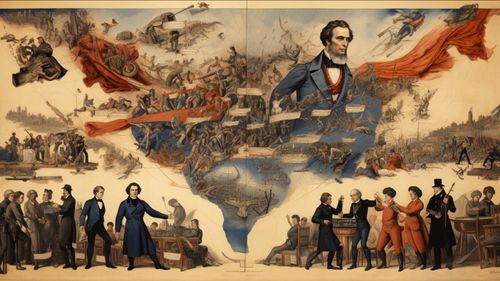Decoding the Compromise of 1850: A balancing act amid rising tensions
Dec 05, 2023 · 2 mins read
0
Share

The Compromise of 1850 was a landmark legislative package aimed at resolving disputes between free and slave states in the United States during a period of heightened tensions over the expansion of slavery.
Save
Share
It was a series of laws: California entered as a free state, while the territories of New Mexico and Utah were allowed to determine their stance on slavery through popular sovereignty.
Save
Share
The Fugitive Slave Act was strengthened, compelling citizens to assist in capturing and returning escaped slaves, intensifying abolitionist sentiments in the North.
Save
Share
The slave trade was abolished in Washington D.C., addressing concerns about the capital’s association with slavery.
Save
Share
Texas surrendered its claims to parts of New Mexico in exchange for debt relief, altering the state’s boundaries.
Save
Share
The compromise aimed to maintain a balance between free and slave states in the Union, seeking to appease both sides of the slavery debate.
Save
Share
It was a temporary solution to mounting tensions, delaying the eruption of conflict but failing to address the underlying issues surrounding slavery.
Save
Share
The compromise exacerbated sectional divides, with both abolitionists and pro-slavery advocates discontented with various aspects of the legislation.
Save
Share
While it temporarily eased tensions, it ultimately failed to prevent the eruption of the Civil War, highlighting the irreconcilable differences between the North and South over the issue of slavery.
Save
Share
Despite its intent to maintain peace, the Compromise of 1850 inadvertently contributed to the intensification of anti-slavery sentiments and heightened the polarization between Northern and Southern states.
Save
Share
0